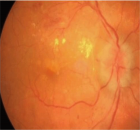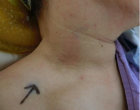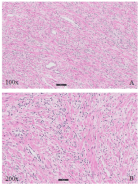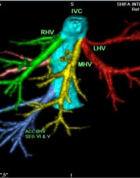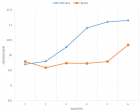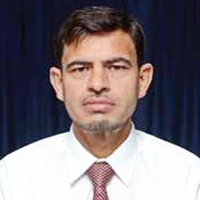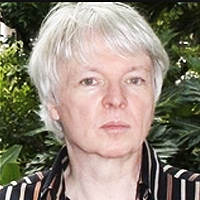Abstract
Case Series
Shoulder recovery for head and neck cancer patients after unilateral neck dissection: a pilot exploratory study
Celia Ia Choo Tan*, Pauline Hui Ling Yeo, Mahalakshmi Rangabashyam, Aisyah Binte Omar, Cindy Li Whye Ng, Rehena Sultana, Kevin Netto, Meng Ai Png, Rahul Nagadia, Gerald Ci An Tay, Ngian Chye Tan, N Gopalakrishna Iyer and Hiang Khoon Tan
Published: 28 September, 2022 | Volume 6 - Issue 2 | Pages: 011-017
An established side-effect of neck dissection (ND) for head and neck (HNC) tumour management includes shoulder dysfunction (SD), which can impact quality of life (QOL). Shoulder strength and range of movement (ROM) are key parameters to be monitored in SD. However, such evaluations are not routinely conducted in the clinical setting. The aim of this study was to evaluate objectively the impact of ND on shoulder functions.
Methods: This is a pilot exploratory study in a tertiary cancer centre. Five participants with unilateral ND and advanced HNC, completed the study. Outcome measures consisted of self-reported QOL questionnaires, C2–T1 dermatomes and shoulder ROM and strength testing. Data was collected at baseline, 1.5-months after surgery and 6-months after diagnosis (after adjuvant treatment completion).
Results: Most outcome measures on the surgically affected side were negatively impacted post-operatively, with varied recovery seen at follow-up. Sensory loss was noted at C3–4 dermatome levels. Shoulder ROM and strength was reduced on the surficial side for all participants, with some recovery after six months except for two participants.
Conclusion: Results of SD after ND are diverse and unique to each patient. Findings from this pilot study indicate that regular rehabilitation/exercise may facilitate recovery of shoulder function post HNC surgery. However, customised rehabilitation may yield better outcomes. Future studies with a larger sample are indicated to validate the findings of this study.
Read Full Article HTML DOI: 10.29328/journal.jnpr.1001045 Cite this Article Read Full Article PDF
Keywords:
Head and neck cancer; Neck dissection; Shoulder disability; Physical therapy; Rehabilitation QOL
References
- Robbins KT, Clayman G, Levine PA, Medina J, Sessions R, Shaha A, Som P, Wolf GT; American Head and Neck Society; American Academy of Otolaryngology--Head and Neck Surgery. Neck dissection classification update: revisions proposed by the American Head and Neck Society and the American Academy of Otolaryngology-Head and Neck Surgery. Arch Otolaryngol Head Neck Surg. 2002 Jul;128(7):751-8. doi: 10.1001/archotol.128.7.751. PMID: 12117328.
- Stuiver MM, van Wilgen CP, de Boer EM, de Goede CJ, Koolstra M, van Opzeeland A, Venema P, Sterken MW, Vincent A, Dijkstra PU. Impact of shoulder complaints after neck dissection on shoulder disability and quality of life. Otolaryngol Head Neck Surg. 2008 Jul;139(1):32-9. doi: 10.1016/j.otohns.2008.03.019. PMID: 18585558.
- Eickmeyer SM, Walczak CK, Myers KB, Lindstrom DR, Layde P, Campbell BH. Quality of life, shoulder range of motion, and spinal accessory nerve status in 5-year survivors of head and neck cancer. PM R. 2014 Dec;6(12):1073-80. doi: 10.1016/j.pmrj.2014.05.015. Epub 2014 May 28. PMID: 24880060; PMCID: PMC4247358.
- Ghiam MK, Mannion K, Dietrich MS, Stevens KL, Gilbert J, Murphy BA. Assessment of musculoskeletal impairment in head and neck cancer patients. Support Care Cancer. 2017 Jul;25(7):2085-2092. doi: 10.1007/s00520-017-3603-1. Epub 2017 Feb 13. PMID: 28191589.
- Gane EM, McPhail SM, Hatton AL, Panizza BJ, O'Leary SP. Neck and Shoulder Motor Function following Neck Dissection: A Comparison with Healthy Control Subjects. Otolaryngol Head Neck Surg. 2019 Jun;160(6):1009-1018. doi: 10.1177/0194599818821885. Epub 2019 Jan 22. PMID: 30665326.
- Gane EM, Michaleff ZA, Cottrell MA, McPhail SM, Hatton AL, Panizza BJ, O'Leary SP. Prevalence, incidence, and risk factors for shoulder and neck dysfunction after neck dissection: A systematic review. Eur J Surg Oncol. 2017 Jul;43(7):1199-1218. doi: 10.1016/j.ejso.2016.10.026. Epub 2016 Nov 17. PMID: 27956321.
- Almeida KAM, Rocha AP, Carvas N, Pinto ACPN. Rehabilitation Interventions for Shoulder Dysfunction in Patients With Head and Neck Cancer: Systematic Review and Meta-Analysis. Phys Ther. 2020 Oct 30;100(11):1997-2008. doi: 10.1093/ptj/pzaa147. PMID: 32750136.
- Gerritsen JK, Vincent AJ. Exercise improves quality of life in patients with cancer: a systematic review and meta-analysis of randomised controlled trials. Br J Sports Med. 2016 Jul;50(13):796-803. doi: 10.1136/bjsports-2015-094787. Epub 2015 Dec 30. PMID: 26719503.
- Rogers LQ, Courneya KS, Robbins KT, Malone J, Seiz A, Koch L, Rao K, Nagarkar M. Physical activity and quality of life in head and neck cancer survivors. Support Care Cancer. 2006 Oct;14(10):1012-9. doi: 10.1007/s00520-006-0044-7. Epub 2006 Mar 15. PMID: 16538497.
- Sammut L, Ward M, Patel N. Physical activity and quality of life in head and neck cancer survivors: a literature review. Int J Sports Med. 2014 Aug;35(9):794-9. doi: 10.1055/s-0033-1363984. Epub 2014 Feb 19. PMID: 24554555.
- Guru K, Manoor UK, Supe SS. A comprehensive review of head and neck cancer rehabilitation: physical therapy perspectives. Indian J Palliat Care. 2012 May;18(2):87-97. doi: 10.4103/0973-1075.100820. PMID: 23093823; PMCID: PMC3477371.
- American Spinal Injury Association (ASIA). International Standards for Neurological Classification of Spinal Cord Injury (ISNCSCI) Worksheet. Retrieved from https://asia-spinalinjury.org/international-standards-neurological-classification-sci-isncsci-worksheet/ (accessed 25/05/2021).
- Hunter KU, Jolly S. Clinical review of physical activity and functional considerations in head and neck cancer patients. Support Care Cancer. 2013 May;21(5):1475-9. doi: 10.1007/s00520-013-1736-4. Epub 2013 Feb 17. PMID: 23417564.
- Oosterwijk AM, Nieuwenhuis MK, van der Schans CP, Mouton LJ. Shoulder and elbow range of motion for the performance of activities of daily living: A systematic review. Physiother Theory Pract. 2018 Jul;34(7):505-528. doi: 10.1080/09593985.2017.1422206. Epub 2018 Jan 29. PMID: 29377745.
- Lee SEK, Lira CAB, Nouailhetas VLA, Vancini RL, Andrade MS. Do isometric, isotonic and/or isokinetic strength trainings produce different strength outcomes? J Bodyw Mov Ther. 2018 Apr;22(2):430-437. doi: 10.1016/j.jbmt.2017.08.001. Epub 2017 Aug 19. PMID: 29861246.
- Saffold SH, Wax MK, Nguyen A, Caro JE, Andersen PE, Everts EC, Cohen JI. Sensory changes associated with selective neck dissection. Arch Otolaryngol Head Neck Surg. 2000 Mar;126(3):425-8. doi: 10.1001/archotol.126.3.425. PMID: 10722022.
- van Wilgen CP, Dijkstra PU, van der Laan BF, Plukker JT, Roodenburg JL. Morbidity of the neck after head and neck cancer therapy. Head Neck. 2004 Sep;26(9):785-91. doi: 10.1002/hed.20008. PMID: 15350024.
- Garzaro M, Riva G, Raimondo L, Aghemo L, Giordano C, Pecorari G. A study of neck and shoulder morbidity following neck dissection: The benefits of cervical plexus preservation. Ear Nose Throat J. 2015 Aug;94(8):330-44. PMID: 26322451.
- Dilber M, Kasapoglu F, Erisen L, Basut O, Tezel I. The relationship between shoulder pain and damage to the cervical plexus following neck dissection. Eur Arch Otorhinolaryngol. 2007 Nov;264(11):1333-8. doi: 10.1007/s00405-007-0357-2. Epub 2007 Jun 7. PMID: 17554547.
Figures:

Figure 1
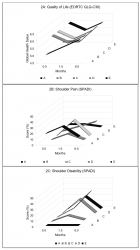
Figure 2
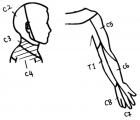
Figure 3
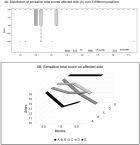
Figure 4
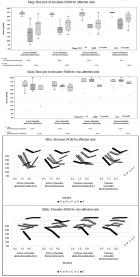
Figure 5
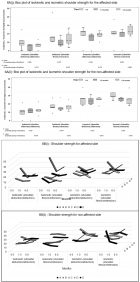
Figure 6

Figure 7
Similar Articles
-
Frequency specific microcurrent resolves chronic pain and adhesions after ulnar transposition surgeryJodie Adams*,Carolyn McMakin. Frequency specific microcurrent resolves chronic pain and adhesions after ulnar transposition surgery. . 2017 doi: 10.29328/journal.jnpr.1001012; 1: 099-103
-
Physical Therapy for Transverse Myelitis: A Case ReportAllison Buchanan,Kelli J Wilkerson,Han-Hung Huang*. Physical Therapy for Transverse Myelitis: A Case Report. . 2018 doi: 10.29328/journal.jnpr.1001017; 2: 015-021
-
Kinesio taping in patients with shoulder impingementSorin P*,Ramirez FJ,Joly A,Patiño O,Terrasa S. Kinesio taping in patients with shoulder impingement. . 2019 doi: 10.29328/journal.jnpr.1001026; 3: 034-038
-
Shoulder recovery for head and neck cancer patients after unilateral neck dissection: a pilot exploratory studyCelia Ia Choo Tan*,Pauline Hui Ling Yeo,Mahalakshmi Rangabashyam,Aisyah Binte Omar,Cindy Li Whye Ng,Rehena Sultana,Kevin Netto,Meng Ai Png,Rahul Nagadia,Gerald Ci An Tay,Ngian Chye Tan,N Gopalakrishna Iyer,Hiang Khoon Tan. Shoulder recovery for head and neck cancer patients after unilateral neck dissection: a pilot exploratory study. . 2022 doi: 10.29328/journal.jnpr.1001045; 6: 011-017
-
The Impact of Telerehabilitation on Physical Therapy Services in Rural CommunitiesLi Ma*. The Impact of Telerehabilitation on Physical Therapy Services in Rural Communities. . 2024 doi: 10.29328/journal.jnpr.1001058; 8: 014-016
Recently Viewed
-
Maternal and perinatal outcomes of uterine rupture in Lubumbashi, Democratic Republic of CongoJacques Ngoy Kitenge,Olivier Mukuku*,Xavier K Kinenkinda,Prosper L Kakudji. Maternal and perinatal outcomes of uterine rupture in Lubumbashi, Democratic Republic of Congo. Clin J Obstet Gynecol. 2020: doi: 10.29328/journal.cjog.1001067; 3: 136-141
-
Effect of sperm DNA fragmentation on ICSI outcome: A prospective studySaravanan Lakshamanan,Saravanan Mahalakshmi,Harish Ramya,Sharma Nidhi*. Effect of sperm DNA fragmentation on ICSI outcome: A prospective study. Clin J Obstet Gynecol. 2020: doi: 10.29328/journal.cjog.1001065; 3: 127-131
-
Forensic analysis of private browsing mechanisms: Tracing internet activitiesHasan Fayyad-Kazan*,Sondos Kassem-Moussa,Hussin J Hejase,Ale J Hejase. Forensic analysis of private browsing mechanisms: Tracing internet activities. J Forensic Sci Res. 2021: doi: 10.29328/journal.jfsr.1001022; 5: 012-019
-
A study of coagulation profile in patients with cancer in a tertiary care hospitalGaurav Khichariya,Manjula K*,Subhashish Das,Kalyani R. A study of coagulation profile in patients with cancer in a tertiary care hospital. J Hematol Clin Res. 2021: doi: 10.29328/journal.jhcr.1001015; 5: 001-003
-
Viral meningitis in pregnancy: A case reportRuth Roseingrave*,Savita Lalchandani . Viral meningitis in pregnancy: A case report. Clin J Obstet Gynecol. 2020: doi: 10.29328/journal.cjog.1001063; 3: 121-122
Most Viewed
-
Evaluation of Biostimulants Based on Recovered Protein Hydrolysates from Animal By-products as Plant Growth EnhancersH Pérez-Aguilar*, M Lacruz-Asaro, F Arán-Ais. Evaluation of Biostimulants Based on Recovered Protein Hydrolysates from Animal By-products as Plant Growth Enhancers. J Plant Sci Phytopathol. 2023 doi: 10.29328/journal.jpsp.1001104; 7: 042-047
-
Sinonasal Myxoma Extending into the Orbit in a 4-Year Old: A Case PresentationJulian A Purrinos*, Ramzi Younis. Sinonasal Myxoma Extending into the Orbit in a 4-Year Old: A Case Presentation. Arch Case Rep. 2024 doi: 10.29328/journal.acr.1001099; 8: 075-077
-
Feasibility study of magnetic sensing for detecting single-neuron action potentialsDenis Tonini,Kai Wu,Renata Saha,Jian-Ping Wang*. Feasibility study of magnetic sensing for detecting single-neuron action potentials. Ann Biomed Sci Eng. 2022 doi: 10.29328/journal.abse.1001018; 6: 019-029
-
Pediatric Dysgerminoma: Unveiling a Rare Ovarian TumorFaten Limaiem*, Khalil Saffar, Ahmed Halouani. Pediatric Dysgerminoma: Unveiling a Rare Ovarian Tumor. Arch Case Rep. 2024 doi: 10.29328/journal.acr.1001087; 8: 010-013
-
Physical activity can change the physiological and psychological circumstances during COVID-19 pandemic: A narrative reviewKhashayar Maroufi*. Physical activity can change the physiological and psychological circumstances during COVID-19 pandemic: A narrative review. J Sports Med Ther. 2021 doi: 10.29328/journal.jsmt.1001051; 6: 001-007

HSPI: We're glad you're here. Please click "create a new Query" if you are a new visitor to our website and need further information from us.
If you are already a member of our network and need to keep track of any developments regarding a question you have already submitted, click "take me to my Query."






